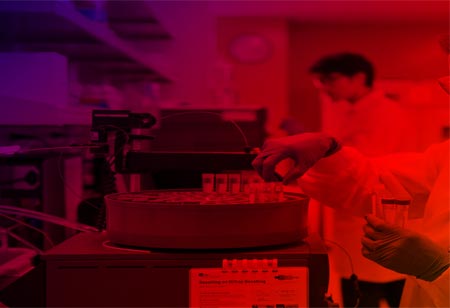A semiconductor is any material whose electricity can be executed between an insulator and a conductor.
Fremont, CA: Chemical engineers, who contributed to the innovation of semiconductor gadgets, are also regularly interested in designing refined semiconductor materials and the manufacturing methods needed to create them.
Chip materials
A semiconductor is any material whose electricity can be executed between an insulator and a conductor. Germanium was the semiconductor material utilized in the first integrated circuit. Silicon was employed as the base material, which set the path to the initial commercial-scale production of integrated circuits.
Electronics' power source
Converting silicon into a semiconductor chip is a particular undertaking. It needs the multidisciplinary skill of chemical engineers and numerous other technical specialists.
Wafers
The process begins with forming a pure, monocrystalline silicon ingot, generally 6 to 12 inches in diameter. The ingot is cut into ultrathin wafers, each below 1/40th of an inch thick.
The wafers are first polished through an expert technique that corresponds nano-sized abrasive particles into a polishing slurry. The favorably polished wafers next experience a subsequent series of procedure steps. Each step concerns depositing a complicated layer of a semiconductor, a conductor, or an insulating material. Hoarded in numerous layers, these materials produce an integrated circuit's transistors, resistors, and capacitors.
Advanced transistors are much times smaller than the ones developed only 60 years ago and multiple times smaller than the vacuum tubes utilized in radios, TVs, and early computers just 30 years ago. The circuits in these tiny, nearly nanoscale transistors are the essential tools for cell phones, iPods, computers, and several other unavailable gadgets even 20 years ago.
Ultra-pure materials
As chip makers count more and more transistors to ever-smaller semiconductor chips, the existence of even the tiniest impurities can ruin an individual chip and severely lessen manufacturing capacity. So the purity needs for the chemicals utilized in chip manufacturing have been greatly improved.
Making it clear
The purity needs of today's semiconductor facilities are even more strict than those utilized in the food-processing industry. Unnecessary impurities—dissolved and grainy contaminants and trace metals—can readily ruin individual wafers and harshly decrease a manufacturing facility's output.
Mass production
After the integrated circuit was first formed and the proper materials recognized, the priority moved to the dispute of manufacturing on a commercial scale. Numerous particularized chemical-engineering fields, from fluid mechanics to kinetics, have been instrumental in designing current semiconductor manufacturing methods.
Concluding
The manufacture of semiconductor devices commonly entangles four necessary processing stages:
• Deposition of essential active materials onto the fundamental silicon wafer;
• Choosy expulsion of avoided materials;
• Lithography to form the preferred connections and circuits; and
• Revision of electrical properties.
Numerous standard chemical engineering ideas are used across the manufacturing method. The thriving growth of silicon ingots needs awareness of fluid mechanics, heat and mass shift, and crystallization. During the deposition method, an understanding of kinetics is also required.
The manufacturing method must be conducted in an ultra-clean atmosphere.
Clean gets even cleaner
Today's general dime-sized semiconductor chip comprises millions of microscopic transistors. On that ultrasmall scale, the smallest speck of dust about the chip would seem like a dinosaur-sized footprint to us. A speck of dust is sufficient to block the chip's numerous pathways, rendering it ineffective.
Semiconductor fabrication facilities, called fabs, rely greatly on their particularized clean rooms to keep a controlled, low level of environmental contaminants.
Ultra clean processing
Semiconductor manufacturing facilities count on clean rooms. The objective is to extract from these rooms even the fine particles that could come in touch with the chips. Standards permit at most 1 dust particle per cubic foot of air compared with the around 10,000 dust particles /ft3 found in our latest hospitals.
Clean gets even cleaner
Current regular dime-sized semiconductor chip holds millions of microscopic transistors. On that ultrasmall scale, the minuscule dust about the chip would seem like a dinosaur-sized footprint to us. A speck of dust is sufficient to obstruct the chip's numerous pathways, rendering it ineffective.
Semiconductor fabrication facilities, called fabs, rely heavily on their particularized clean rooms to manage a steady, low level of environmental contaminants.
Check Out This: Electrical Business Review

